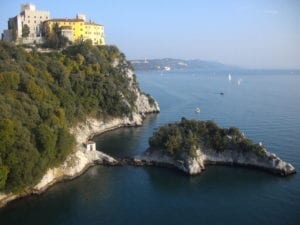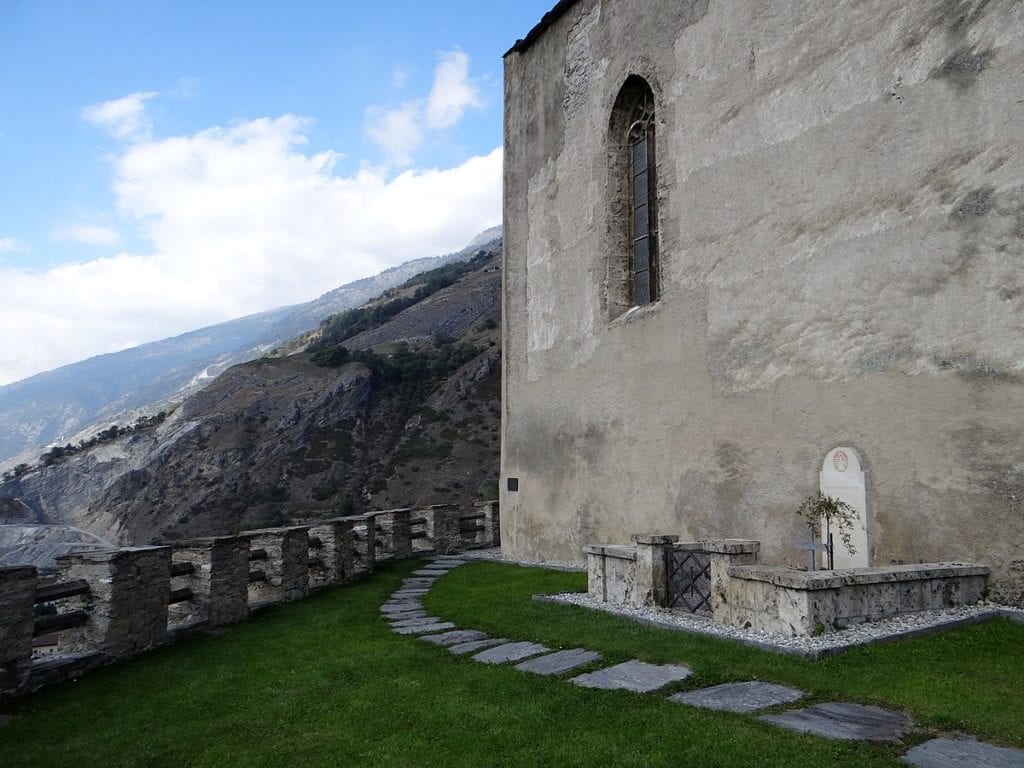Nicolas Roberto Robles
Badajoz, Spain
 |
| Figure 1. A portrait of Rilke painted two years after his death by Leonid Pasternak. Via Wikimedia. Public domain. |
Rose, oh reiner widerspruch, lust,
Niemandes schlaf zu sein under soviel lidern
Rose, o pure contradiction, desire,
to be no one’s sleep beneath so many lids.
– Rainer Maria Rilke, epitaph
On December 4, 1875, René Karl Wilhelm Johann Josef Maria Rilke (later changed to Rainer Maria Rilke) was born in Prague, the only child of an unhappy marriage. His father was the son of a retired officer in the Austrian army who worked as a railroad official; his mother was socially ambitious and possessive. In an effort to ensure the social standing his father had failed to achieve, at the age of ten the young Rilke was sent to a rigorous military academy. The poetic and sensitive boy spent five unhappy years there, leaving in 1891 because of illness. He returned to Prague at the age of sixteen and found that his parents had divorced in his absence. With the help of his uncle, who recognized the boy’s gifts, Rilke secured a place at a German preparatory school, which he attended for only one year before being expelled. Shortly thereafter he began private instruction aimed at passing the entrance exams for Prague’s Charles-Ferdinand University.
By the time Rilke had enrolled in the philosophy program at university in 1895, he had already published his first volume of poetry, Life and Songs (1894), at his own expense. Studying in Munich in 1897, the twenty-two-year-old Rilke met and fell in love with the thirty-six-year-old woman of letters Lou Andreas-Salomé. Their relationship ended in 1900, but they would remain in touch until Rilke’s death. He visited Russia and present-day Ukraine with Andreas-Salomé in 1899 and 1900. The interconnected tales Stories of God were inspired by this trip to Russia. It is said that the immensity of the Russian landscape and the deep spirituality he perceived in the rustic people he met led him to an experience of finding God in all things.
Brought up Catholic, Rilke referred to God and biblical figures in a fairly orthodox way. He wrote a volume on the life of Mary, a poem representing the Annunciation, and a description of the night in which Jesus doubted. Nevertheless, he was not strict in his religious views, so while God is mentioned in many of his poems, his own beliefs may not be inferred from them.
Rilke has been defined as a “chronically homeless person,” constantly in search of an ideal setting in which his poetry could flourish. In 1900 he stayed at the artists’ colony at Worpswede. It was there that he met the sculptor Clara Westhoff, a former pupil of Auguste Rodin. They married the following year and their daughter Ruth was born in December 1901. The marriage failed from the start; although they never divorced because of Rilke’s official status as a Catholic, the two agreed to a separation.
 |
| Figure 2. Duino’s Castle from Castelvecchio. Via Wikimedia. Public domain. |
In the summer of 1902, Rilke left home and traveled to Paris to write a monograph on the sculptor Rodin. He became a friend, and for a time secretary, to Rodin, and it was during his twelve-year Paris residence that Rilke enjoyed his greatest poetic activity. Rilke continued to travel during this time; to Italy, Spain, and Egypt among many other places. Between October 1911 and May 1912, Rilke stayed at the Castle Duino, near Trieste, home of Princess Marie von Thurn und Taxis. There he began the poem cycle called the Duino Elegies, which would remain unfinished for a decade because of a long-lasting creativity crisis.
The outbreak of the First World War surprised Rilke during a stay in Germany and he was unable to return to Paris. He spent the greater part of the war in Munich. From 1914 to 1916 he had a turbulent affair with the expressionist painter Lou Albert-Lasard. Rilke was called up to fight at the beginning of 1916 and had to undertake basic training in Vienna. Influential friends interceded on his behalf, and he was transferred to the war records office and discharged from the military in June 1916.
In the last years of his life, Rilke finally settled in the French-speaking part of Switzerland, in the medieval chateau of Muzot, which his patron Werner Reinhart rented and placed at his disposal. He never worked, relying on the generosity of patrons and his long-suffering publisher.
While living in Switzerland he received a visit from the beautiful Nimet Eloui Bey, a famous model and wife of a wealthy Egyptian railroad tycoon, who had posed for Lee Miller and Man Ray and was the first non-Western model to be featured in the pages of American Vogue. Nimet Eloui succeeded in reconciling the worldly demands of her amazing beauty with a strong intellect and well-trained personality. Her beauty fascinated at first glance, but the richness of her intelligence and knowledge of poetry, philosophy, and theology overwhelmed any man who knew her.
 |
| Figure 3. Rilke’s grave in Raron, Switzerland. Photo by Geri340 on Wikimedia. CC BY-SA 4.0. |
To honor his visitor, Rilke gathered some roses from his garden. While doing so, he pricked his hand on a thorn. An infection from this small wound rapidly worsened until his entire arm was swollen and he became septic. Thus began the poetic telling of the poet’s death: he was murdered by a beautiful and fragile flower. The unknown part of the story is that Rilke had been ill since 1923, but was not diagnosed with leukemia until a few weeks before his death. Leukemia may be classified as acute or chronic, and given the insidious onset of Rilke’s symptoms, which had included mouth ulcers, abdominal pain, weight loss, and fatigue, he likely had a chronic form of leukemia for years. Because the bone marrow is compromised in its ability to manufacture functional white blood cells, infections are a common cause of death for those with leukemia. This was especially true in the era before antibiotics had been introduced.1
Open-eyed, Rainer Maria Rilke died in the arms of his doctor on December 29, 1926, at the sanatorium Val-Mont above Territet on Lake Leman, near the place where Lord Byron composed the Sonnet of Chillon. According to his wishes he was laid to rest in the lofty churchyard of the old Church of Raron, near Muzot.
O HERR, gib jedem seinen eignen Tod.
Das Sterben, das aus jenem Leben geht,
darin es Liebe hatte, Sinn und Not.
DENN wir sind nur die Schale und das Blatt.
Der große Tod, den jeder in sich hat,
das ist die Frucht, um die sich alles dreht.
God, give us each our own death
the dying that proceeds from each of our lives
the way we loved, the meanings we made, our need.
For we are only the rind and the leaf.
The great death, that each of us carries inside,
is the fruit, everything enfolds it.
– Rainer Maria Rilke, Das Stundenbuch
References
- Juliusson G, Hough R. Leukemia. Prog Tumor Res. 2016;43:87‐100.
NICOLAS ROBERTO ROBLES is professor of Nephrology at the University of Extremadura in Spain.
Spring 2020 | Sections | Literary Essays

Leave a Reply